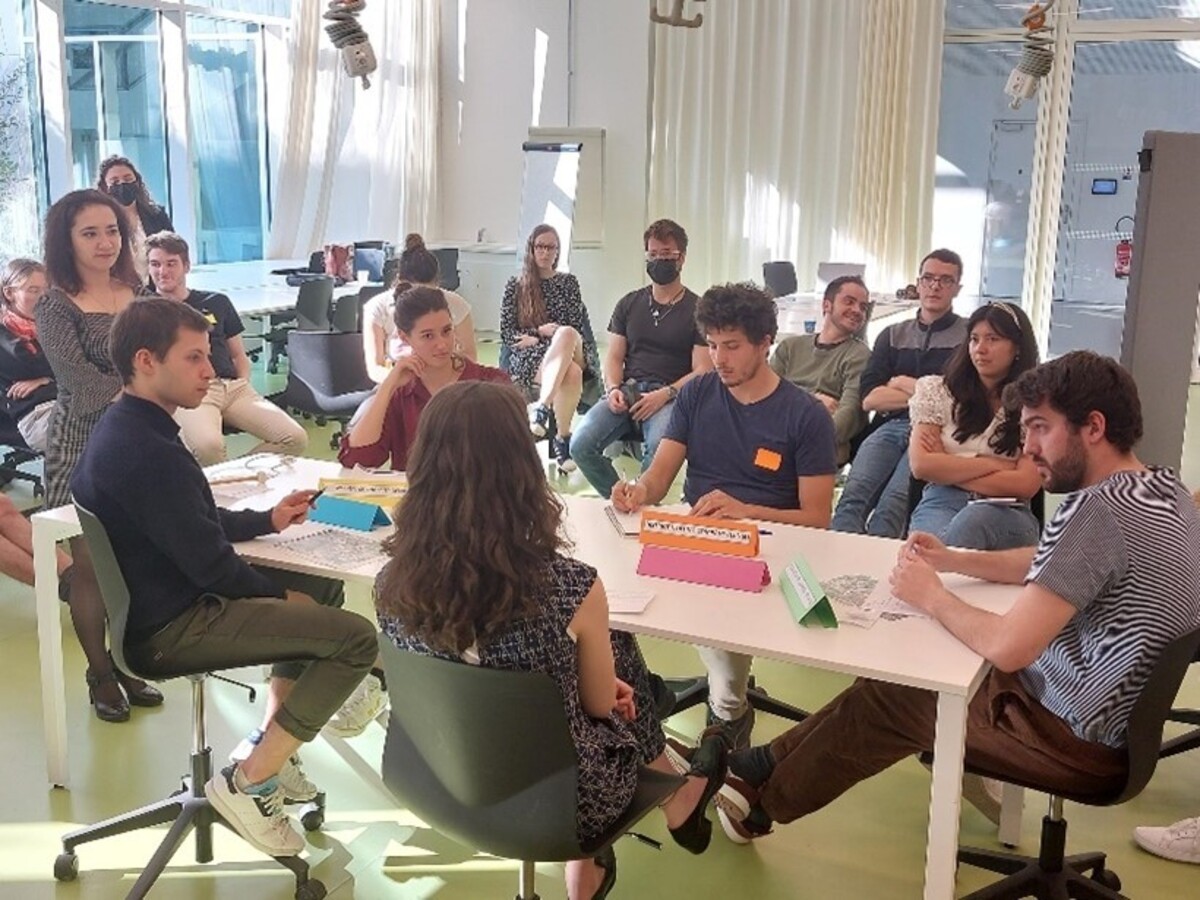Look back on the D2Grids serious game on Paris Saclay pilot site !
- D2Grids Communication
- /
- the 01-04-2022
- / 890
On March 25, a "serious game" organised by the European D2Grids project was held. The objective was to offer CentraleSupélec students a simulation of the deployment process of a 5th generation heating and cooling grid. This workshop took place at CentraleSupélec, in the heart of the Paris Saclay pilot site, which benefits from the 5th generation heating and cooling grid of the Paris-Saclay establishment, the D2GRIDS project pilot site.
During the simulation day, the students were first welcomed by Anna Bronzes, who gave them a word of welcome, alongside their professor François Cluzel.
A fundamental prerequisite for this interactive role-play was a good understanding of the 5GDHC.
Mathilde Henry, Project Manager at Greenflex took the time to introduce them to this concept and its 5 fundamental principles. Unlike traditional district heating, it is an intelligent thermal grid based on a local low temperature loop. Decentralised energy production, thanks to heat pumps located at the user's premises, allows the exchange of energy on the network, where the flows are induced by the demand. This concept allows the recovery of cold and heat emitted by supermarkets, data centres, factories, offices, etc.
Then, the workshop was presented by Anna Bronzes:
it is an interactive role-playing game with a hypothetical scenario in which a district heating company organises a meeting with a view to deploying a heating and cooling grid in their city. In this case, the city chosen was Glasgow, the venue for the last COP (COP26).
key stakeholders are invited to a meeting to discuss the deployment of the district heating and cooling grid within the city and the buildings that would be connected to it.

The students were divided into groups according to different roles:
- A social landlord
- A workspace management company.
- The town hall
- A sewage treatment plant
- And finally, the district heating company that is looking to roll out the grid.
Once the introduction phase was over, the students immediately put themselves in the shoes of the stakeholders. They were given 10 minutes to think in teams about a strategy to adopt with the elements at their disposal: additional information on the 5GDHC, a map of the city, a role map, secret interests of each party, etc.
After this time, a first negotiation phase was opened during which each stakeholder was able to discuss its role in the grid deployment.

At the end of this first negotiation phase, the students were again divided into teams to brainstorm and review their strategy according to the results of the first discussion.
A second meeting was then held for the stakeholders to discuss and agree on the final terms of their agreements.
In order to achieve one's goals, it is necessary to score as many points as possible on the score sheet according to the particular objectives, while at the same time advancing the discussion as best as possible in order to reach coherent and ambitious agreements!
This workshop, in addition to introducing the students to the issues related to the deployment of a 5th generation district heating and cooling grid, served as a case study: nearly 25 kilometres of 5th generation grids are running under their feet between the infrastructures of the EPA Paris-Saclay campus.

A big thank to the students of CentraleSupélec for playing the game!
contact[a]5GDHC.eu
